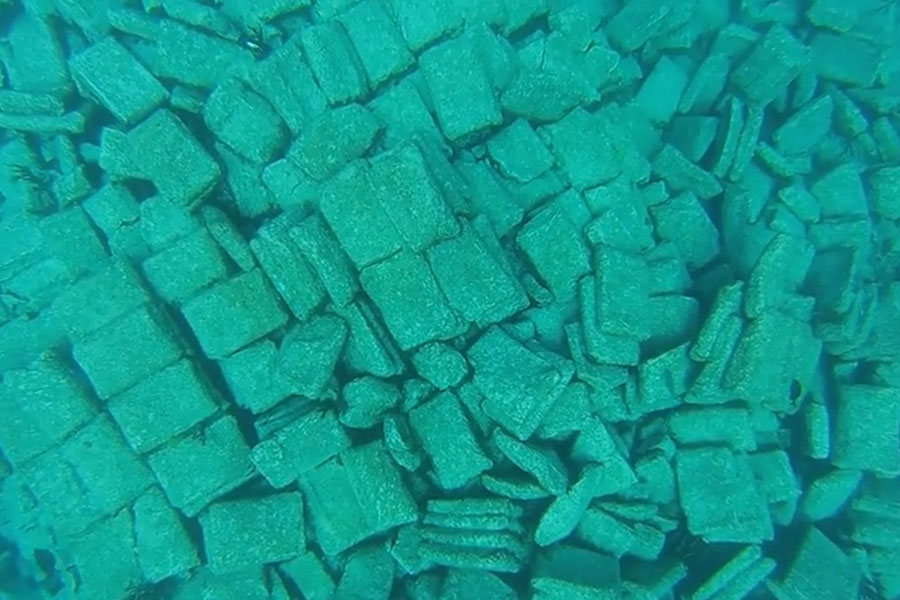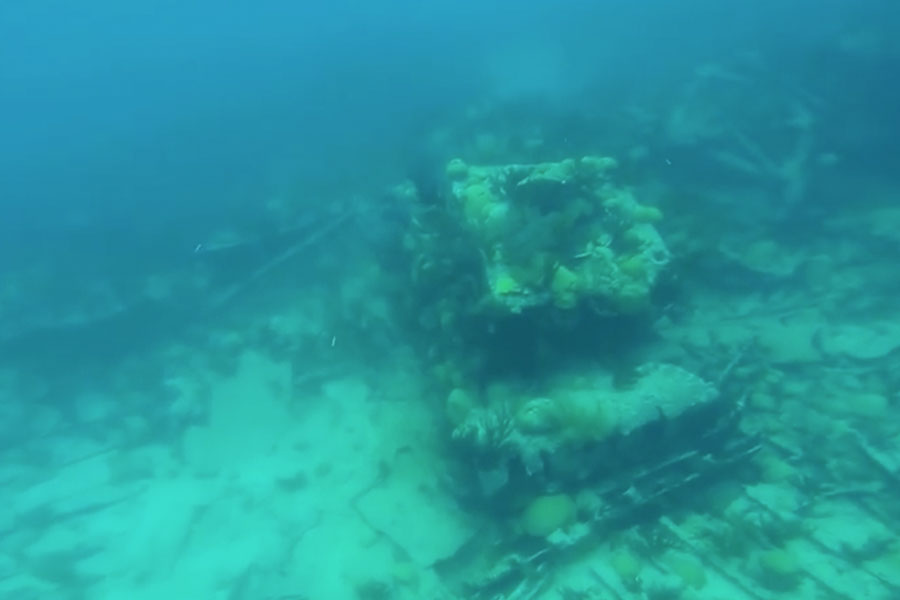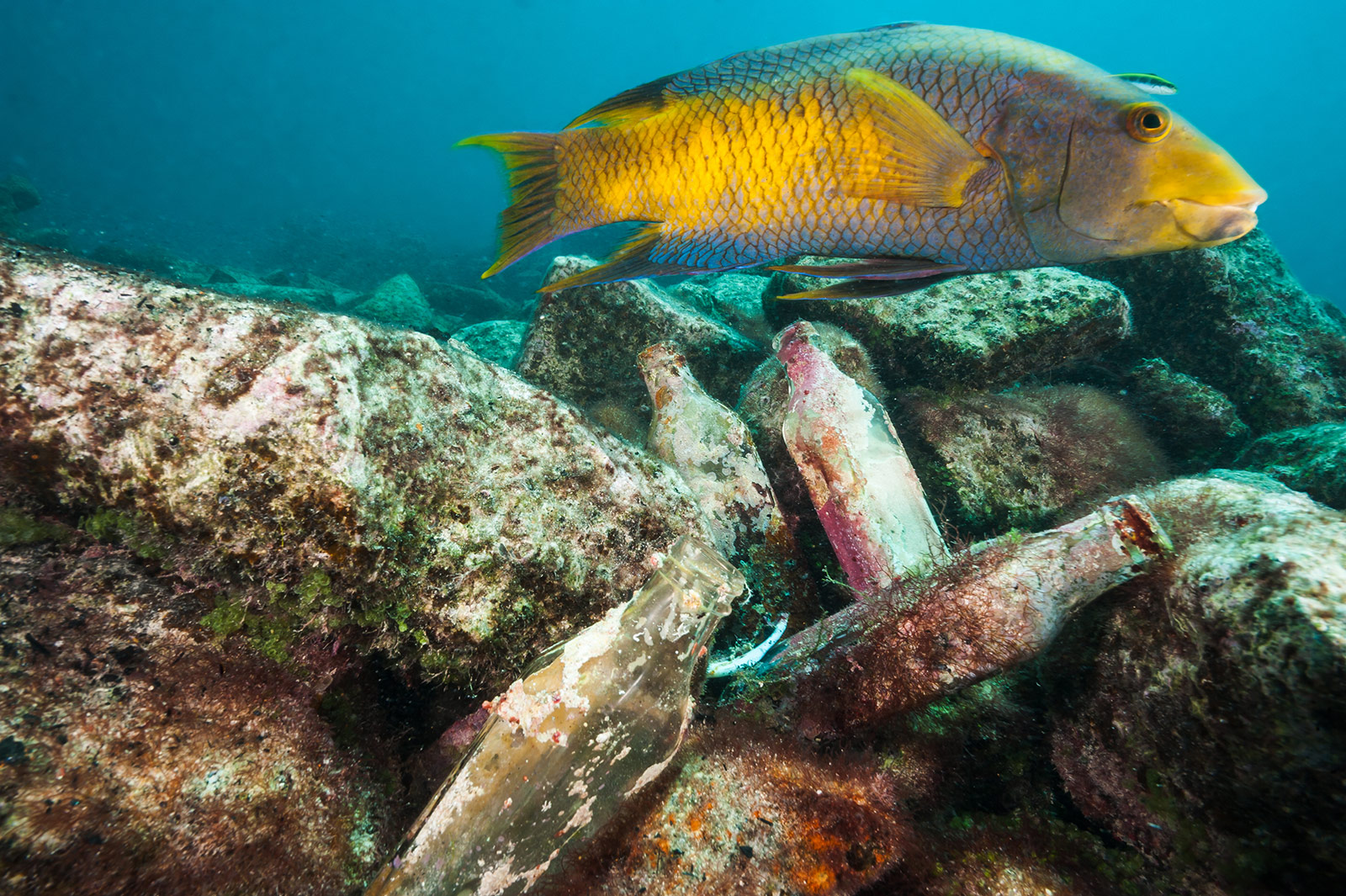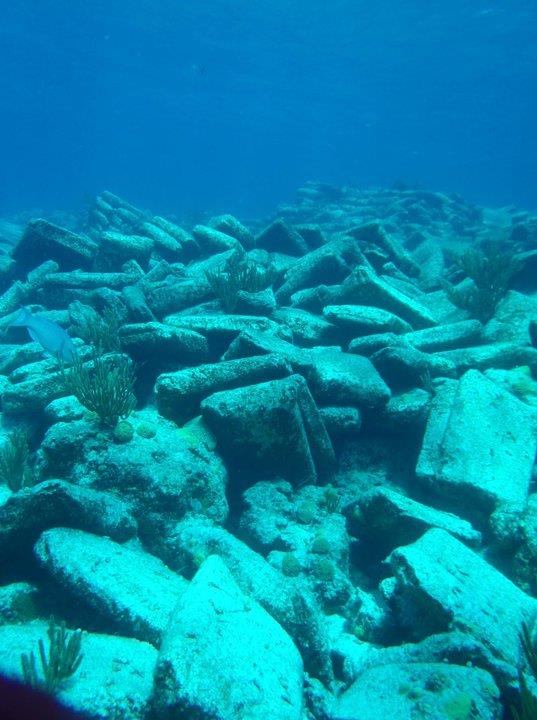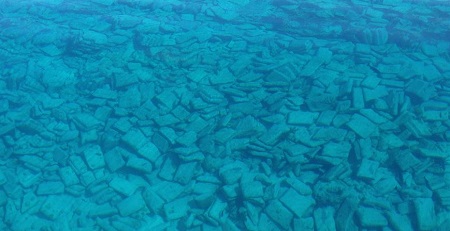Built in 1918 by the Frye Flinn Co. in Harrington, Maine, the four-masted, wooden-hulled schooner was originally called the Sally Persis Noyes. She was used as a cargo vessel until 1932 and then underwent a complete refurbishment, including modern plumbing, spacious lounge, dining saloon, stately rooms, new rigging and a new name: the Constellation. Unable to find work as a cruise ship, she was sold off and started to carry cargo again, hauling lumber, coal and other commodities up and down the U.S. eastern seaboard. During World War II, she was pressed into service for the merchant navy and used as a cargo vessel owned by Intercontinental Steamship Lines of New York.
On July 19, 1943, the Constellation set sail from New York bound for Venezuela under Captain Neavers. Among the 2,000 tons of cargo were cement bags, antique furniture, salad dressing, phonograph records, cosmetics, drums of alkali, medical supplies – and 700 cases of Johnny Walker whiskey. On July 22, the ship began to take on water and diverted to Bermuda for repair work. Captain Neavers was not familiar with Bermuda’s waters and headed for the Gibbs Hill Lighthouse beacon, but as the Constellation reached the Western Blue Cut reef northwest of Bermuda, the ship hit the reef and sank on July 31, 1943. Captain and crew were rescued by tug boats; everyone survived. A salvage company retrieved some of the cargo and sold it at public auction in Bermuda, but a considerable amount was left undisturbed on the seabed. The U.S. Navy helped in the salvage effort – primarily retrieving at least 300 cases of whiskey. Much later, divers continued the effort, and archaeologists from the Bermuda Maritime Museum (now the National Museum of Bermuda) recorded the site in the early 1990s in collaboration with divers from the Maritime Archaeological and Historical Society.
The Constellation sank at almost the spot where, roughly 100 years earlier, the Montana went down. Indeed, some reports say the ship may have struck the bow of the Montana, rather than the reef, prior to its sinking. The Constellation’s cargo of ornate-looking glass ampules full of iodine, penicillin, insulin, adrenaline and morphine became the inspiration for American author Peter Benchley’s novel, “The Deep”. In it, a fictional 20th-century shipwreck, the Goliath, carrying a cargo of morphine ampules and munitions, sank on top of an 18th-century Spanish treasure ship. The movie adaptation, released in 1977 and starring Jacqueline Bisset, Nick Nolte, Robert Shaw and Lou Gossett, Jr., was largely filmed on location in Bermuda.
CURRENT CONDITION
Today thousands of 50-pound cement bags are spread over the coral and sand seabed just eight feet below the surface – part of the 80,000 pounds of cement she was carrying. Also visible from her cargo are snooker table slates, sheets of glass, metal drums and glass bottles lying nearby. A portion of the ship’s rigging was used as part of the flagpole at the Royal Bermuda Yacht Club and some of her sails were discovered in near-perfect condition under Burt Darrel’s Boat Shed on Harbour Road in the 1990s (prior to its destruction). Anyone riding the Paget Ferry can see the 40-foot remains of the lower parts of one of the Constellation’s massive masts resting on the rocks below Harbour Road, just before the Belmont ferry dock. Algae grows well on the petrified cement bags, attracting parrotfish and the predatory trumpetfish in search of juvenile parrotfish. Bermuda chubs, barracuda and groupers can also be seen, and a large population of sergeant-majors use the cement bags as shelter for their eggs.
STATISTICS
Location: 32°21'42.08"N, 64°54'50.76"W Length: 190 feet (58 meters) Depth: 26 to 30 feet (8 to 9 meters) Tonnage: 1,034 tons Protected Area Radius - No Fishing: 500m


